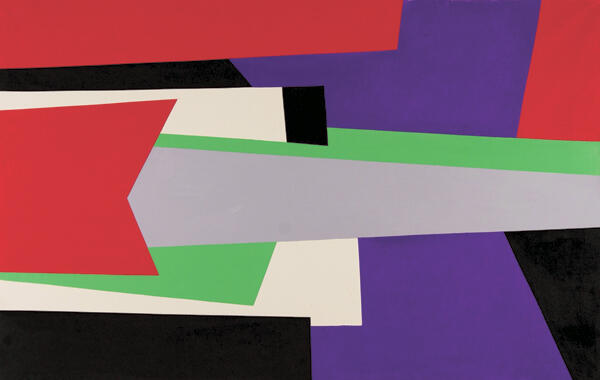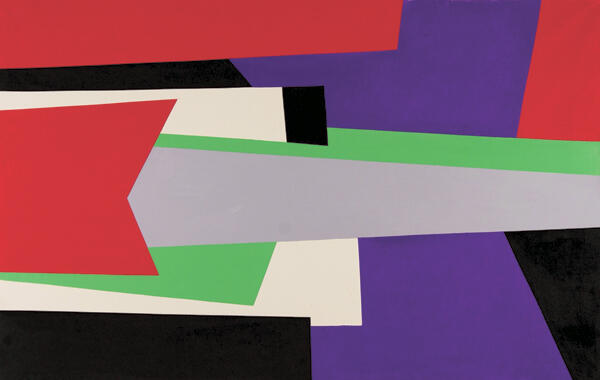_The Silent Shout: Voices in Cuban Abstraction 1950-2013_
Virginia Miller, Miami
The Silent Shout… shows the continuity of abstraction in Cuba from the mid-twentieth century to the present, contributing to complete the map of that vast current that spanned the continent, including the Caribbean, but whose reconstruction has been fragmentary until now and has often excluded the contribution of territories such as Colombia, Mexico and Cuba.

The exhibition features the works of nine artists belonging to different generations: from the only MADI member in the group, Sandú Darié, born in 1908, to the talented emerging artist Luis Enrique López, born eighty years later, along with Hugo Consuegra, Carlos García, Raúl Martínez, Pedro de Oraá, José Rosabal, Loló Soldevilla, and José A. Vincench. In 1996, the latter artist and the painter Ramón Serrano curated together with Janet Batet, the significant exhibition Pinturas del silencio, to show, against the grain, the persistence of the exploration of abstraction in the country, characterized by a solitary mode of resistance to confront the prejudice that surrounded abstraction in the island.
Departing from the contradiction that may be found in the origin and the principles of abstract expressionism and geometric abstraction, or in explorations of such dissimilar nature as organic geometry and concretism, The Silent Shout (El grito silencioso), curated by the mentioned Vincench and Batet, together with Rafael Díaz Casas, encompasses different territories and time periods in the panorama of abstract painting in the island. The risk implied in the diachronic and heteroclite criterion on which the vision adopted by the curators is based –a vision that is not aligned with any paradigm but is, however, esthetically coherent – is worth highlighting.
Thus, they intercalate a beautiful large-format work by the emerging López, who translates onto the pictorial space the changing dynamics of the physiology of the human eye in the presence of light through the repetition of circles of variable dimensions and color intensities, and one of the rhythmic works by Soldevilla, who found a concrete language through which to fuse musical rhythms and maps of the stars and who, before abandoning abstraction due to his political commitment with the 1959 Revolution, brought to the island the largest exhibition of international geometric art, which included a key presentation of the also pioneer and defender of abstraction, Mario Carreño. Beside Soldevilla’s work there is a painting by the expressionist Martínez that precedes the Revolution and his incursions in a kind of political Pop art, and then the validity of this type of abstraction is reaffirmed by the work of García, Detalle de una estrella (Detail of a Star), which reflects his parallel alignment with informalism. Next, Divertimento 1, in blacks and grays, reveals the way in which Pedro de Oráa – a pioneer and co-founder, together with Soldevilla, of Luz y Color Gallery – revisits in 2013 the avant-garde movements that deconstructed forms, and creates a three-dimensionality that connects us to forms in an organic way.
There are valuable works loaned by collections, such as a concrete composition by Darié dated 1950, or a forceful group of works by Consuegra in different media, dating from the 1950s and 1960s, that show the development of abstract expressionism in the Cuba of those decades. Recent works by Vincench in gold leaf on white paint propose, in turn, the filtration of conceptual gestures in the apparent abstract geometric composition, in which the term “exile” is camouflaged.
The exhibition contributes to make visible and exalt a type of creation which, avoiding heteronomous surveillance in Cuba – due to the fact that abstraction was associated either to an accommodating capitalist subjectivity or to a formal concern alien to reality – enriched the abstract trend that ran through Latin America in the 20th century, and that has and maintains a strength of its own in Cuba.
-
 Acrylic on canvas, 35 x 60 in./Acrílico sobre tela, 89 x 152,4 cm. Courtesy of/Cortesía de ArtSpace/Virginia Miller Galleries, Coral Gables (Miami), Florida
Acrylic on canvas, 35 x 60 in./Acrílico sobre tela, 89 x 152,4 cm. Courtesy of/Cortesía de ArtSpace/Virginia Miller Galleries, Coral Gables (Miami), Florida




